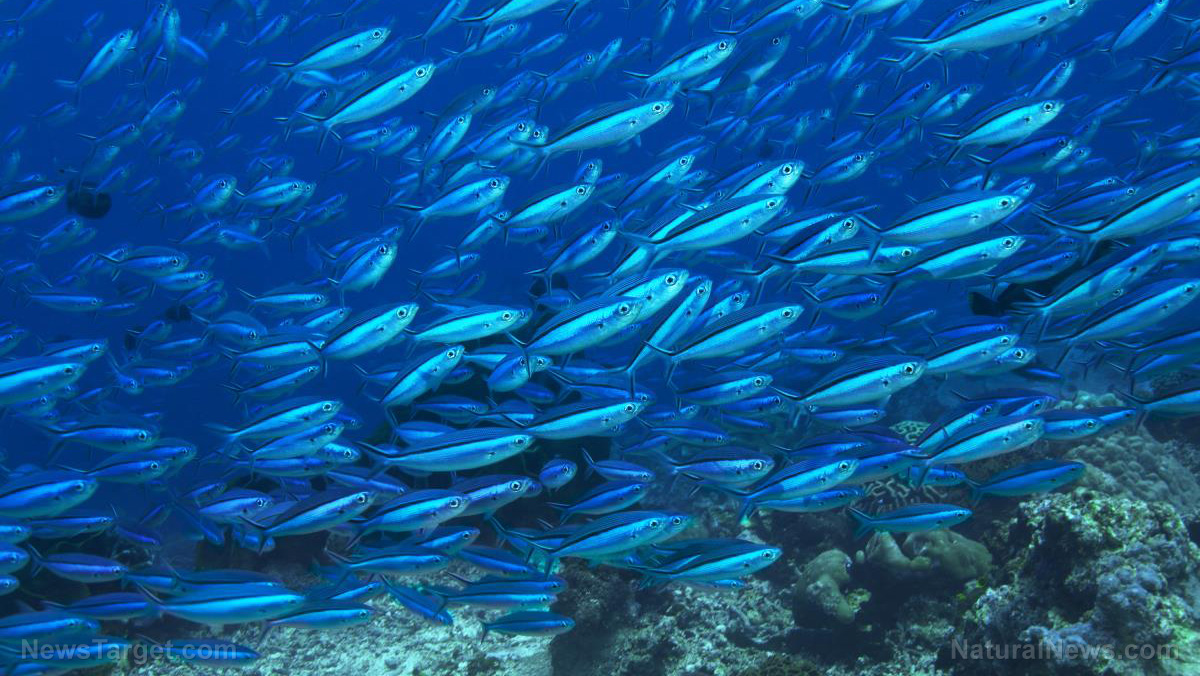Noise pollution threatening the food supply? Human-generated underwater noise found to disrupt the ability for fish to school
03/27/2019 / By Jhoanna Robinson

Fish generally cluster together and move as one because they need cohesion and coordination when it comes to exchanging information like where to find food sources and how to avoid predators. However, small interruptions to their normal activities, such as when they are disturbed by the grueling sounds of man’s gigantic machines, can cause miscommunication among them, leaving them open to attacks from outside forces.
A team from the University of Bristol in England played back recordings of construction noise such as pile-drivings – specifically ones that happen during the erection of marine infrastructure like piers and wind farms – to 450 individual sea bass in shoals of four individuals each.
“By using state-of-the-art computer tracking software, we were able to measure and analyze the movement of individual fish and the shoal as a whole in great detail,” Dr. Christos Ioannou from the University of Bristol‘s School of Biological Sciences said. “This is one of the few studies to explore how pollution from human activity impacts schooling behavior in fish. Previous work has mostly focused on the effect of noise on the physiology and behavior of individual animals.”
The researchers observed that when the seabass were exposed to noise and sounds of construction work, they became “less cohesive and coordinated,” which is not the case when they were exposed to normal ambient ocean sounds.
The findings were deemed “troubling,” as noise pollution can make schools of fish vulnerable to predators and thereby prematurely lessen their number. The findings were published in Proceedings of the Royal Society B and was funded by the government’s Natural Environment Research Council (NERC).

The test was done at an aquarium at the University of Bristol. Researchers plan on conducting the same experiment under natural conditions the next time they undertake this matter.
Wind turbines are supposedly killing bats
In a study that was conducted last year by researchers at Exeter University, it was revealed that wind turbines are killing hundreds of bats every year.
The project was identified as environmentally non-impacting by federal agencies. However, when researchers searched the area near the turbines while accompanied by trained guide dogs, they found multiple dead bats in the vicinity.
Researchers said the bats, while on their usual path towards their destination, get sucked into the turbines’ whirling blades when they get too close, causing their demise.
There are other ways in which man’s activity can interfere with the natural habitats of animals. For instance, the noise that passing ships create usually cause a distraction for dolphins and killer whales and hamper their ability to effectively hunt for their food. (Related: 12 million whales, dolphins and other marine creatures threatened around the world by the Navy.)
According to research, the average intensity of noise next to ships is equivalent to 173 underwater decibels, and which equates to III decibels through the air – about the sound of a loud rock concert.
Sources include:
Submit a correction >>
Tagged Under:
This article may contain statements that reflect the opinion of the author





















